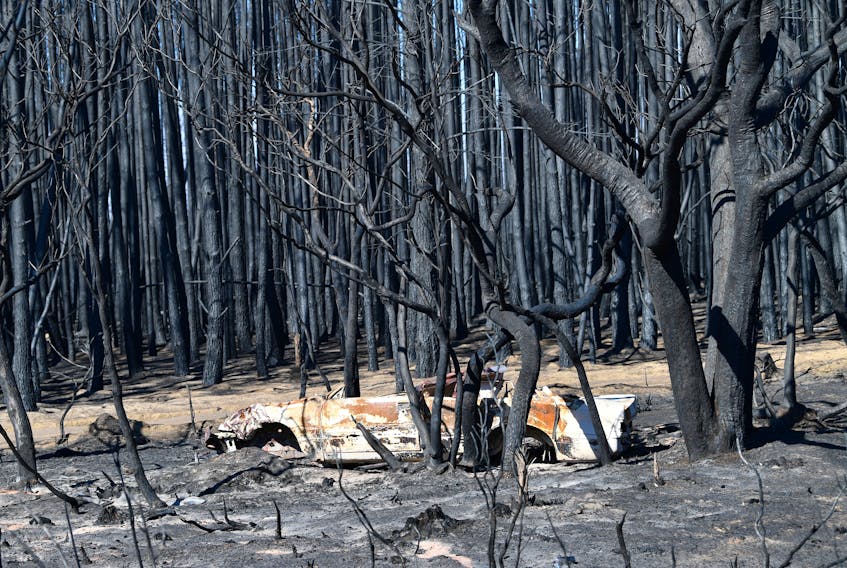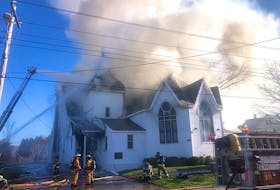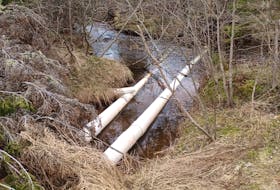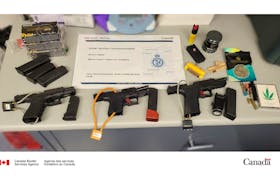As more than 150 fires continued to ravage Australia over the weekend, Canada sent a fourth deployment of fire specialists to New South Wales to help battle the blazes that have so far killed 23 people, burned 5 million hectares of land and destroyed an estimated 480 million animals.
Twenty-one personnel from across Canada departed Saturday night for the hardest hit state New South Wales, with a fifth deployment of eight specialists scheduled to depart for neighbouring Victoria on Monday night, according to the Canadian Interagency Forest Fire Centre (CIFFC).
A total of 95 Canadians from fire services in Yukon, British Columbia, Alberta, Saskatchewan, Manitoba, Ontario, Quebec, Newfoundland and Parks Canada will be working in Australia this week following previous deployments on Dec. 3, Dec. 19 and Dec. 30. The first crew will return on Jan. 9 after a 38-day deployment.
Every crew member volunteered for the 31- to 38-day shifts, for which they will be paid under a mutual aid agreement where the host region pays, CIFFC information officer Melanie Morin said in an interview Sunday.
Australia has sent its fire personnel to Canada four times over the past several years as Alberta and B.C. grappled with severe fires, Morin said. The opposite fire seasons and a shared use of a standardized incident command system make it easier to share resources across countries, she said.
Help from outside the province or the country is “always much appreciated” by crews that might be affected by the fires themselves, added Morin, who worked throughout the devastating 2018 B.C. wildfire season.
“When we did have big seasons out West, sometimes it starts early, and you can see the rest of the summer going ahead of you and you just have no idea when it’s going to end,” she said. “So getting fresh hands, fresh eyes, people who are ready to jump in … they are a great relief and really, really a great help.”
Australian firefighters have been grappling with more than 120 days of continuous fire activity, she added. It’s just the beginning of their summer, with months of soaring temperatures remaining after the continent’s driest year on record, according to the Australian Bureau of Meteorology.
The United States has also sent about 100 fire personnel to help fight the fires alongside the New South Wales Rural Fire Service, which has 74,000 volunteer members.
The Canadians crews will not be battling fires on the ground, instead providing incident management services in command, operations, logistics and aviation roles. Specific jobs include operations chiefs who help determine tactics and strategy, air attack supervisors, and fire behaviour analysts trained in meteorology and fire science to help predict a fire’s path. All are certified to use the incident command system.
Australia has not yet asked Canada to send firefighters to battle bushfires directly, although the CIFFC would work to facilitate any such request. Once it receives a request, it asks the provinces and territories what they can provide, and who is qualified and willing to go.
“We have sent everything that we’ve been asked for,” Morin said, adding it can be difficult to assess what is needed during a big fire season.
“If they ask for more from Canada … then we’ll do our best to fill that role,” she said.
As of Monday morning in Australia, 136 fires were burning in New South Wales according to the NSW Rural Fire Service. About half were uncontained, with fire crews focused on controlling the largest fires. Thirty-one fires burned in Victoria, according to the state’s County Fire Authority.
Copyright Postmedia Network Inc., 2020









